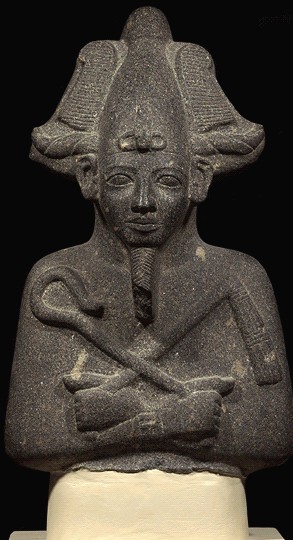|

|
UPPER
PART OF A STATUE OF OSIRIS
Granodiorite
Ptolemaic Period, 305-30 BC
|
|
|
This fragment, representing
the head and upper body of Osiris, probably formed part of a standing
statue of the deity. The god is dressed in the usual enveloping
and close-fitting robe, and holds his arms crossed on his chest;
in his fists are the symbols of kingship, the crook and the flail.
On his chin is the conventional divine beard, the end of which is
broken off. He wears the atef crown, which resembled the white crown
of Upper Egypt, with a feather on both sides, and a pair of ram's
horns jutting out at the base. In artistic depictions this crown
is most frequently worn by Osiris, although it can be shown with
other gods and appears on the head of the king at times; its associations
are with rebirth and renewal. |
|
NEXT IMAGE
| Slide Show Index

All images reproduced by permission
of the Trustees of the British Museum. Informational text provided by
the British Museum.
The History Place Terms
of Use: Private home/school non-commercial, non-Internet re-usage only
is allowed of any text, graphics, photos, audio clips, other electronic
files or materials from The History Place™
|
|

